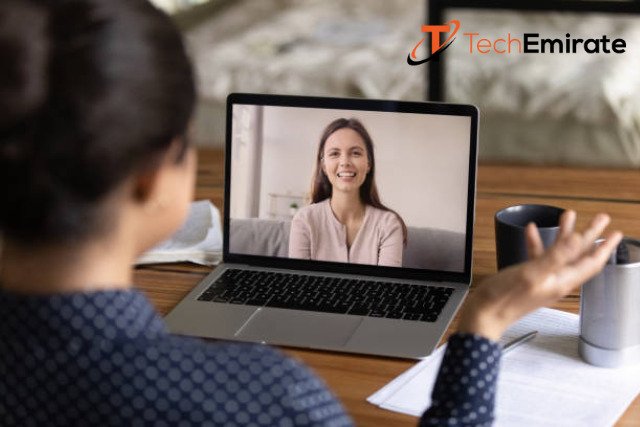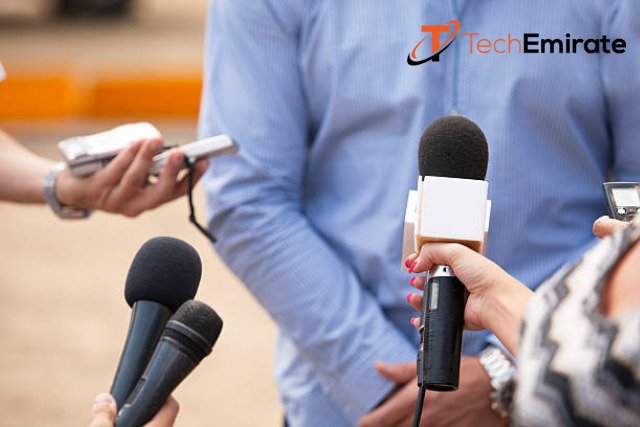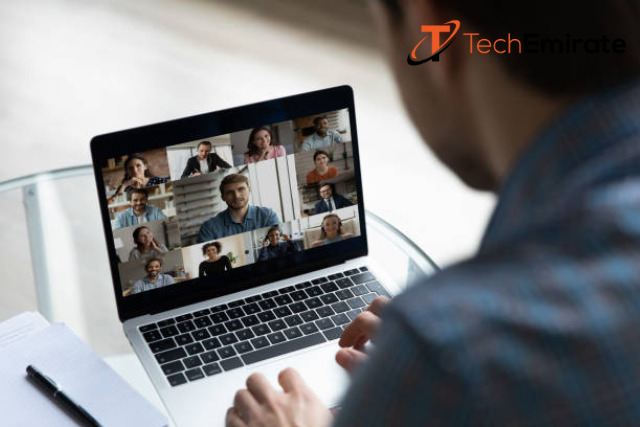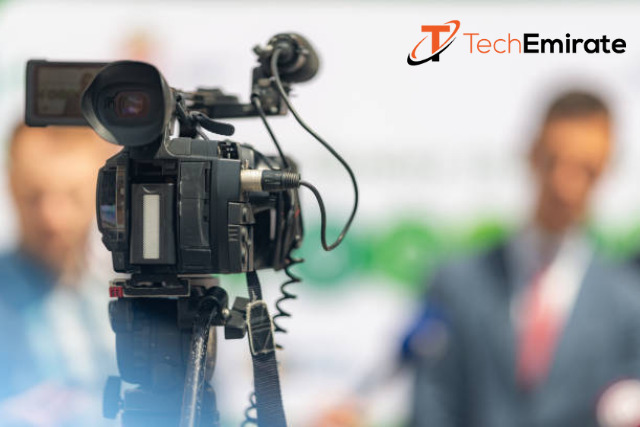Video interviews are really important for businesses and people who want to connect with their audience. Different types of video shooting interviews are a strong way to share information, tell stories, and get people interested.
This guide is here to help you understand these different interview styles and give you tips on how to do your best.
Whether you’ve done lots of video interviews before or you’re getting ready for your first one, I want to help you feel prepared and confident.
Let’s start and explore types of video shooting interviews together!
Table of Contents
TrendingTypes of Video Shooting Interviews In 2024
Video shooting interviews can take various forms, depending on the purpose, style, and setting. Here are 5 types of video shooting interviews that’s now trending:
1. Traditional Face-to-Face Interviews

Traditional face-to-face interviews remain a cornerstone of effective communication. From in-person settings to sophisticated studio setups. The choice of a suitable camera for interviews plays a pivotal role in capturing the essence of the conversation.
The lens quality and resolution contribute to the visual appeal. This ensures that your audience stays engaged.
Pro Tips
- Use soft, diffused lighting for a flattering effect, avoiding harsh shadows.
- Experiment with different lighting setups to enhance the visual appeal of your interviews.
2. Remote Interviews

The rise of remote work has given prominence to virtual interviews conducted through various teleconferencing tools. Selecting the right microphones for interviews is paramount here.
Crystal-clear audio is non-negotiable, and investing in a high-quality microphone can make a substantial difference. Which eliminates distracting background noise and ensures clear communication.
Pro Tips
- Test your camera, microphone, and speakers in advance.
- Use a wired internet connection if possible for a more stable connection.
3. Panel Interviews

When multiple voices contribute to a conversation, panel interviews come into play. Balancing different perspectives requires strategic camera angles and effective microphone placement. A well-positioned camera can capture the dynamics of the group, while strategically placed microphones ensure every voice is heard distinctly.
Pro Tips
- Pay attention to the roles of each panel member. Tailor your responses to address their specific concerns or interests.
- Keep your responses clear and to the point. Avoid unnecessary details that may confuse or overwhelm the panel.
4. Documentary-style Interview

A documentary-style interview is a format that aims to capture between the interviewer and the interviewee. The goal is often to present a genuine and unscripted account of the interviewee’s thoughts, experiences, or expertise. This style is used in documentary filmmaking, video profiles, and other non-fiction content.
Pro Tips
- Research your subjects thoroughly to understand their background, experiences, and perspectives.
- Develop a list of questions but be prepared to deviate from the script to follow interesting leads.
5. Webinar Interviews

Engaging online audiences requires a different set of skills. A webinar interview is not just a conversation; it’s an interactive experience. Incorporate graphics and B-roll seamlessly to reinforce key points, and choose a camera that can adapt to the dynamic nature of online discussions.
Pro Tips
- Consider using a good-quality external microphone and webcam for better audio and video quality.
- Keep your content concise and relevant. Webinar attendees have limited attention spans.
Techniques for Video Shooting Interviews
Shooting compelling interviews involves a combination of technical and interpersonal skills. Here are techniques to enhance your video shooting for interviews:
Lighting
Proper lighting is the unsung hero of video shooting interviews. A well-lit environment not only enhances the visual appeal but also conveys professionalism. Whether you opt for natural light or invest in studio lighting setups, the choice impacts the overall quality of your video.
Camera Angles
Choosing the right camera angles is an art. It’s not just about capturing the subject but conveying emotions and maintaining viewer engagement. Experiment with different angles to find what suits the tone of your interview. Remember, subtlety often speaks louder than extravagance.
Audio Considerations
The importance of clear audio cannot be overstated. While selecting microphones for interviews, consider the acoustics of your environment. Directional microphones are excellent for reducing ambient noise, providing a crisp and focused sound that enhances the viewer’s experience.
Post-Production Considerations
Post-production is a crucial phase in the video production process, where raw footage is transformed into a polished, final product. Here are some post-production considerations for video interviews:
Video Editing
- Trim unnecessary footage, awkward pauses, or mistakes. Use jump cuts judiciously for a smooth flow.
- Integrate B-roll footage to add visual interest and context. This could include relevant shots or overlays that enhance the viewer’s understanding of the content.
Audio Editing
- Remove background noise, echoes, or any other unwanted audio artifacts.
- Ensure consistent audio levels throughout the interview. Adjust volumes for clarity and to avoid sudden loud or soft segments.
Color Correction
- Correct any color temperature issues to ensure a natural and consistent look.
- Enhance the visual appeal by applying a consistent color grade that suits the tone of the content.
Graphics and Text
- Add lower thirds to introduce the interviewee, including their name and title.
- Incorporate relevant graphics or overlays to emphasize key points or convey additional information.
Transitions
- Use transitions between shots to create a seamless flow. Avoid excessive use of flashy transitions, as they can be distracting.
Audio Enhancements
- Add background music if appropriate and if it complements the tone of the video. Ensure it doesn’t overpower the dialogue.
- Use subtle sound effects to enhance specific moments or emphasize key points.
Captioning and Subtitles
- Include closed captions or subtitles to make the video accessible to a broader audience. This is crucial for viewers with hearing impairments and can also improve engagement.
Review and Feedback
- Review the edited video multiple times to catch errors and ensure a cohesive narrative.
- Seek feedback from colleagues or collaborators to gain different perspectives and improve the overall quality.
Export Settings
- Choose the appropriate export settings for your intended platform (YouTube, Vimeo, social media, etc.). Consider factors like resolution, frame rate, and compression settings۔
Quality Control
- Conduct a final quality control check to ensure there are no technical issues, such as audio sync problems or visual artifacts.
Challenges and Solutions in Video Shooting Interviews

Here are two common challenges in video shooting interviews:
Technical Challenges
From connectivity issues to equipment malfunctions, technical challenges are inevitable. Selecting reliable cameras and microphones can mitigate these concerns, ensuring a smoother interview process.
Communication Challenges
In virtual interviews, overcoming language barriers and interpreting non-verbal cues can be challenging. A well-positioned camera and sensitive microphones become essential tools in these situations, fostering clear communication and understanding.
FAQ About Types of Video Shooting Interviews
What are the four types of interviewing styles?
There are four main types of interviewing styles:
- Structured interviews: These interviews follow a predetermined set of questions that are asked in the same order to all candidates. This type of interview is often used for screening candidates and to assess their basic qualifications.
- Semi-structured interviews: These interviews follow a general outline, but the interviewer has some flexibility to ask follow-up questions or to probe for more information. This type of interview is often used to assess a candidate’s fit for a particular role.
- Unstructured interviews: These interviews have no predetermined questions and the interviewer is free to ask anything they want. This type of interview is often used to assess a candidate’s creativity and problem-solving skills.
- Behavioral interviews: These interviews focus on a candidate’s past behavior as a predictor of their future behavior. The interviewer will ask questions about how the candidate has handled specific situations in the past.
What are the four interview channels?
The four main interview channels are:
- Face-to-face interviews: These are the most traditional type of interview and involve the interviewer and candidate meeting in person.
- Phone interviews: These interviews are conducted over the phone and are often used for initial screening candidates.
- Video interviews: These interviews are conducted using video conferencing technology and allow the interviewer and candidate to see each other.
- Online interviews: These interviews are conducted using online assessment tools and allow candidates to take assessments at their own convenience.
How many styles are used in interview?
There are four main types of interviewing styles, as described above. However, there are also many variations of these styles and interviewers may use a combination of styles in a single interview.
What are the different types of TV interviews?
The different types of TV interviews include:
- Live interviews: These interviews are conducted live and are broadcast to a television audience.
- Pre-recorded interviews: These interviews are recorded in advance and are broadcast at a later time.
- Studio interviews: These interviews are conducted in a television studio.
- Location interviews: These interviews are conducted at a location outside of a television studio.
What are the four types of interview and how do they differ?
The four interview types—traditional, remote, panel, and specialized formats—differ in their settings, dynamics, and the number of participants, offering versatility to suit diverse communication needs.
What are the different types of video interview formats?
The different types of video interview formats include:
- Single-camera setup: This is the most common type of video interview format and involves using a single camera to capture the interviewee.
- Two-camera setup: This format involves using two cameras to capture the interviewee, one from a medium shot and one from a closer angle.
- Interviewee-to-camera: This format involves the interviewee speaking directly into the camera.
- Off-camera interview: This format involves the interviewer sitting off-camera and the interviewee speaking directly into the camera.
- B-roll integration: This format involves incorporating supplementary footage, such as location shots or action sequences, into the interview.
What are the 2 types of video interviews?
The two main types of video interviews are:
- Live video interviews: These interviews are conducted live and are broadcast to a web audience.
- Pre-recorded video interviews: These interviews are recorded in advance and are uploaded to a website or social media platform.
What is interview style video?
An interview style video is a video that is recorded in a specific style, such as a single-camera setup or an interviewee-to-camera format.
Summing Up
To be great at filming interviews, you need to understand the technical stuff and connect with your interviewee. Pick the right camera and microphone—they’re like silent buddies making sure every word and expression gets recorded just right.
Keep things simple, be ready, and always look for ways to get better in different types of video shooting interviews. Get the right tools, face challenges, and make interviews that people will remember.

